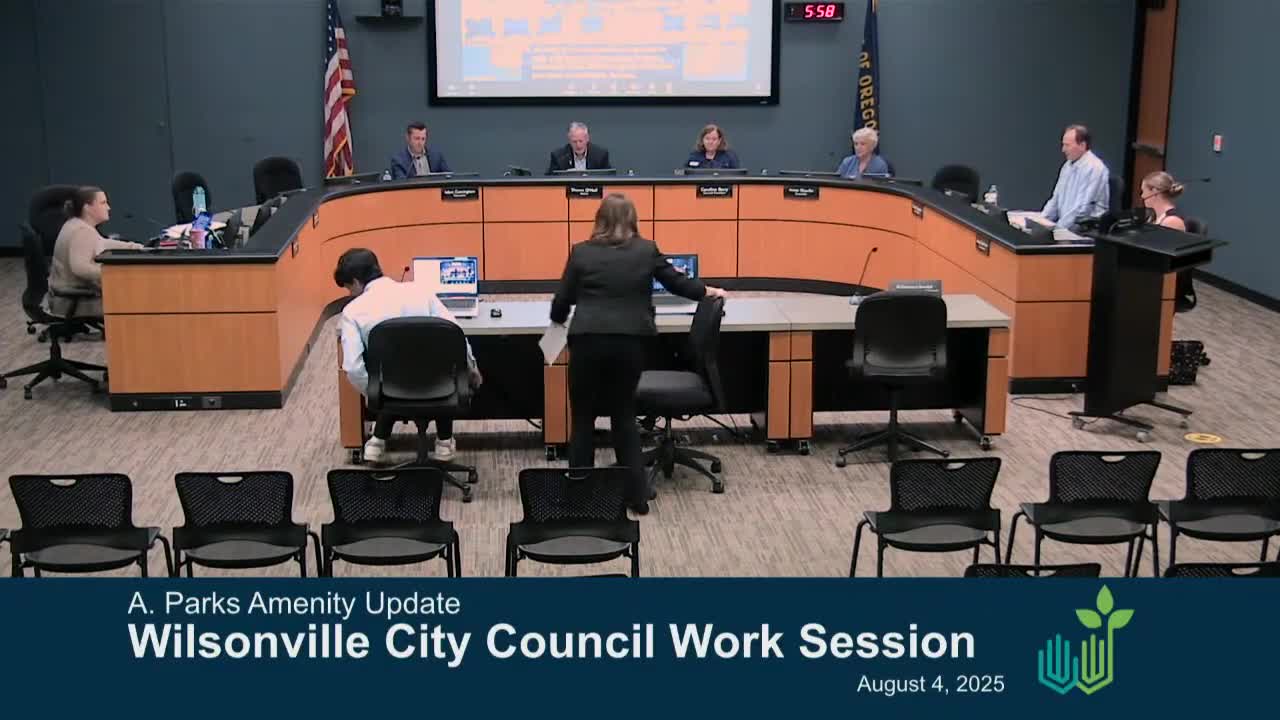Wilsonville City Council Reviews Industrial Land Readiness and Economic Growth Strategies
August 06, 2025 | Wilsonville, Clackamas County, Oregon
This article was created by AI summarizing key points discussed. AI makes mistakes, so for full details and context, please refer to the video of the full meeting. Please report any errors so we can fix them. Report an error »

The City Council of Wilsonville, Oregon, convened on August 4, 2025, for a work session and regular meeting focused on the Wilsonville Industrial Land Readiness project and the citywide economic opportunities analysis. The session aimed to gather input from council members regarding the buildable lands inventory and employment growth forecasts that will inform the city's economic development strategy.
Cindy Luxoy, associate planner, presented the findings alongside Dan Polley, planning manager, and Nicole Underwood from Echo Northwest. The council was asked to review the methodology and preliminary findings of the buildable lands inventory (BLI) and to provide feedback on the projected employment growth rate of 0.85% over the next 20 years, as suggested by the Oregon Employment Department.
The project consists of two parts: one focusing on the industrial area in the northwest of the city, guided by the Salt Creek concept plan, and the other addressing citywide economic opportunities. The update to the Economic Opportunities Analysis (EOA) is crucial as it has not been revised since 2012 and aims to align with Oregon's statewide land use planning goals.
Underwood detailed the BLI process, which identifies land designated for employment uses and assesses its development potential by classifying it as vacant, partially vacant, or developed. After accounting for land constraints, Wilsonville has approximately 366 acres of unconstrained buildable land, predominantly designated for industrial use. The northern parts of the city, particularly Coffee Creek and Basalt Creek, present significant opportunities for industrial development, although challenges such as existing infrastructure and fragmented ownership remain.
The discussion also highlighted the limited availability of commercial land, with only about 13 acres identified as vacant. However, opportunities for redevelopment in key areas like the Town Center and the reuse of large vacant buildings were noted as potential solutions to meet future commercial needs.
The council was informed of broader economic trends affecting Wilsonville, including a slowing labor force growth, the impact of automation and artificial intelligence on job markets, and the potential for labor shortages due to immigration restrictions. These factors could influence the city's ability to attract and retain businesses, particularly in sectors like construction, which is vital to the local economy.
The meeting concluded with a commitment to return in late fall with a full draft of the EOA, focusing on the economic development strategy. The council's feedback will be instrumental in shaping the city's approach to economic growth and land use planning for the next two decades.
Cindy Luxoy, associate planner, presented the findings alongside Dan Polley, planning manager, and Nicole Underwood from Echo Northwest. The council was asked to review the methodology and preliminary findings of the buildable lands inventory (BLI) and to provide feedback on the projected employment growth rate of 0.85% over the next 20 years, as suggested by the Oregon Employment Department.
The project consists of two parts: one focusing on the industrial area in the northwest of the city, guided by the Salt Creek concept plan, and the other addressing citywide economic opportunities. The update to the Economic Opportunities Analysis (EOA) is crucial as it has not been revised since 2012 and aims to align with Oregon's statewide land use planning goals.
Underwood detailed the BLI process, which identifies land designated for employment uses and assesses its development potential by classifying it as vacant, partially vacant, or developed. After accounting for land constraints, Wilsonville has approximately 366 acres of unconstrained buildable land, predominantly designated for industrial use. The northern parts of the city, particularly Coffee Creek and Basalt Creek, present significant opportunities for industrial development, although challenges such as existing infrastructure and fragmented ownership remain.
The discussion also highlighted the limited availability of commercial land, with only about 13 acres identified as vacant. However, opportunities for redevelopment in key areas like the Town Center and the reuse of large vacant buildings were noted as potential solutions to meet future commercial needs.
The council was informed of broader economic trends affecting Wilsonville, including a slowing labor force growth, the impact of automation and artificial intelligence on job markets, and the potential for labor shortages due to immigration restrictions. These factors could influence the city's ability to attract and retain businesses, particularly in sectors like construction, which is vital to the local economy.
The meeting concluded with a commitment to return in late fall with a full draft of the EOA, focusing on the economic development strategy. The council's feedback will be instrumental in shaping the city's approach to economic growth and land use planning for the next two decades.
View full meeting
This article is based on a recent meeting—watch the full video and explore the complete transcript for deeper insights into the discussion.
View full meeting
